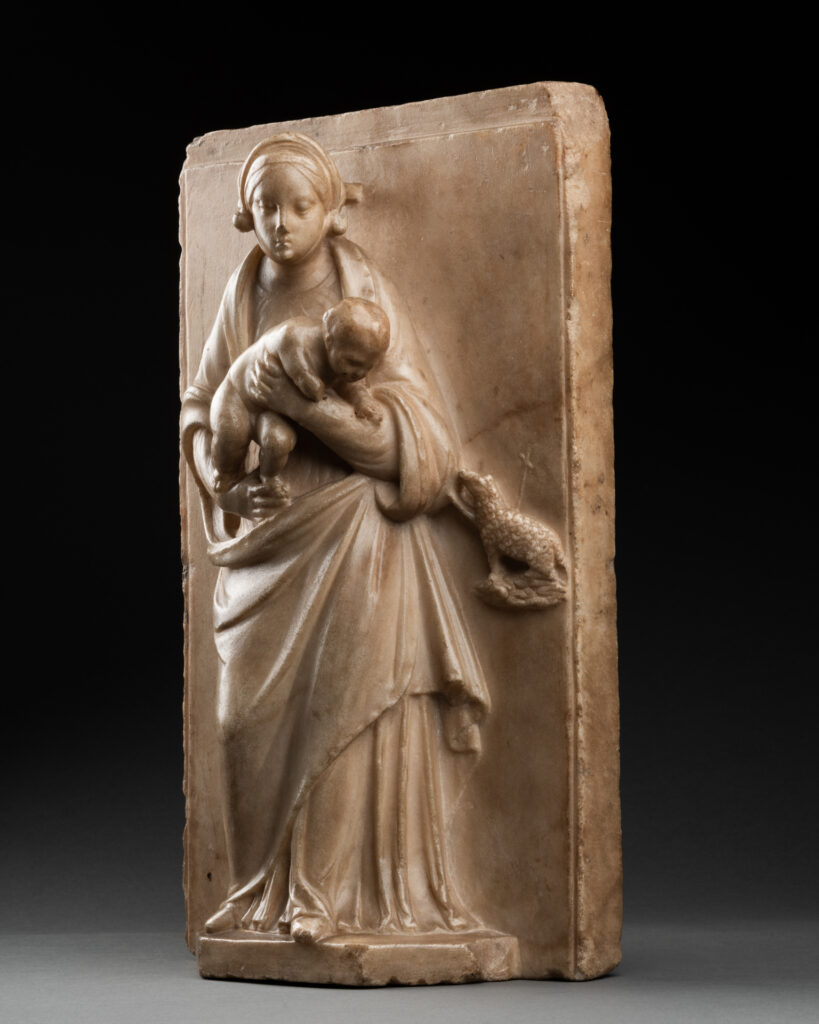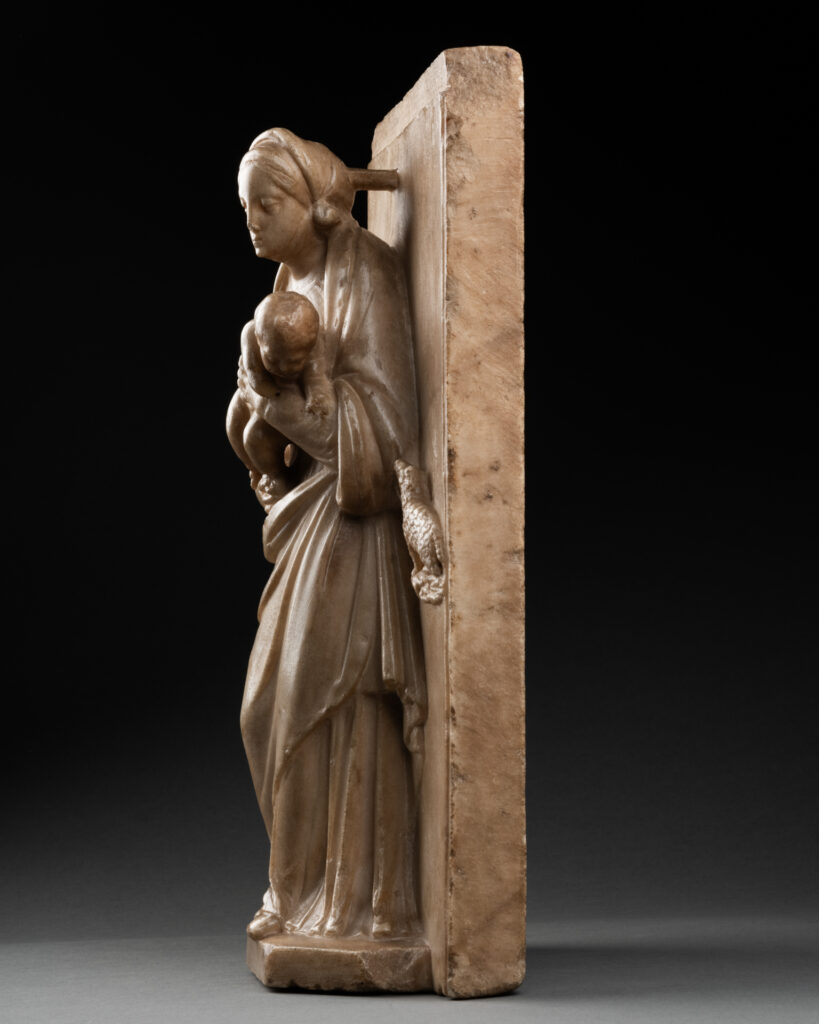This marble bas-relief depicts the Virgin and Child, accompanied by the Agnus Dei. This subject is quite rare, as it combines the Virgin, Child and Lamb on a cloud, all on a bas-relief that is quite thick. This allows the artist to open up certain parts, so we can define this work as being in high relief.
This sculpture comes from the Jean Moreaux collection. A surgeon with a passion for travel, he rubbed shoulders with collectors and antique dealers alike, developing an extensive artistic culture. He set about building up an extensive “Haute Époque” collection, including Italian and Spanish ceramics, liturgical objects and Flemish tapestries. He later expanded his Christian collection outside Europe, bringing back a blessing cross made in Ethiopia.
We can attribute our work to the Lombardy sculptor and architect Briosco Benedetto. He was born in 1460 and died in 1517. For example, he designed the portal of the Charterhouse of Pavia. This artist specialised in bas-reliefs, producing an impressive number of them, and we can see one belonging to the S.Bardini collection in Florence.
The Virgin, St Anne, Christ and St John the Baptist are sculpted in this bas-relief.
We can see some similarities with our work. First of all, Mary’s veil is tied in folds that are turned and then tightened around her head, while the children’s bodies are fleshy. Finally, this artist’s particularity was to sculpt clouds in strategic places. In this work, there’s one on each side of the canopy, and we can perhaps guess the faces of the puttos on it. In our case, it’s the Agnus Dei sitting on a cloud. Behind this animal, we can see a very fine cross that is also present on the work from the S.Bardini collection, except that this time, the cross is at the foot of the Virgin and the Agnus Dei is next to it.
In our work, we can see the Virgin trying to hold back her child, who is trying to escape from her arms. Her face is benevolent, she turns her gaze towards her son in a protective posture, her lips are thin and the tip of her nose is uneven. Her hair is held back under a veil tied around her head, but two strands escape to frame the top of her face.
Her head is detached from the background of the bas-relief to give an effect of depth, and the reinforcement is visible when we look at the work from the side.
She is dressed in a tunic, over which she wears a cloak that reaches down to her feet.
The many folds in her tunic and cloak are reminiscent of the drapery seen on ancient statuary of goddesses. Mary is standing on an overhang made of marble, the tips of her shoe-clad feet visible as they protrude from her dress. One of his feet is sticking out of this marble projection.
Jesus is depicted as a child, naked and in the flesh. Her hair is visible despite the patina of time. He tries to use his legs to support himself on one of his mother’s arms to extricate himself. The artist took care to sculpt the child’s toe protruding between his mother’s fingers. The latter is intrigued by the lamb, sitting on its hind legs and floating on a cloud at his level. It is recognisable by its wool sculpted in little swirls and its fine muzzle.
This lamb, visible in the bas-relief, could be the incarnation of the divine on Earth. It is on a cloud to show that it comes from heaven and is reaching out its paw towards the newborn child. We can see that he is on the same level as Jesus, showing that there is no hierarchy between the heavenly figure and God’s creation, Man.
When John the Baptist spoke of Jesus, calling him ‘the Lamb of God’, he was supporting the fact that he was the Messiah, and that it was through his birth and death that he would reveal the true nature of God. Many of Jesus’ ancestors were shepherds (Isaac, Jacob or David), a rather prestigious profession in those days, symbolizing protection and authority, and often associated with royalty. The shepherd-king brings back the lost sheep.
This bas-relief is characterised by the figure of the ‘Agnus Dei’ on a cloud, a rare and detailed representation that allows us to attribute it to the architect and sculptor Briosco Benedetto. On this work, we can see the important figures of the Bible: the Virgin Mary, Jesus her newborn child and finally God the Father personified in the form of a lamb.




